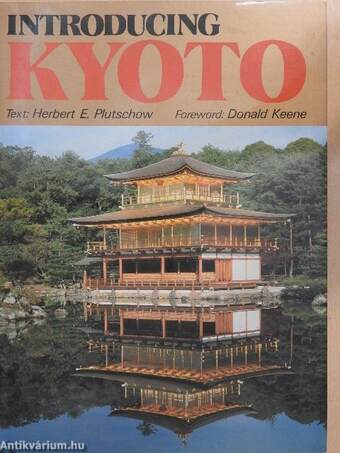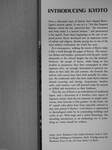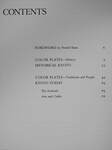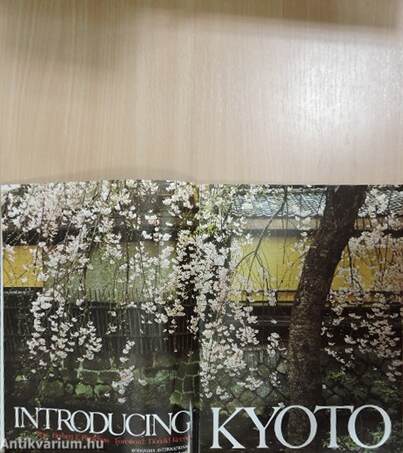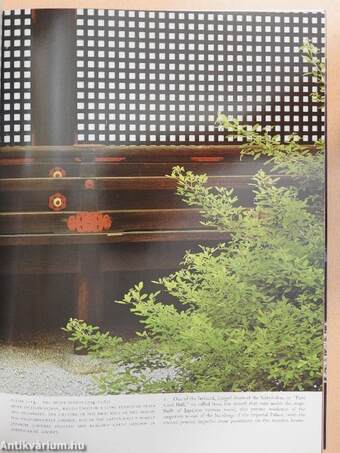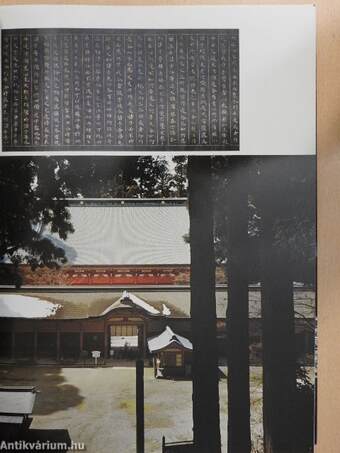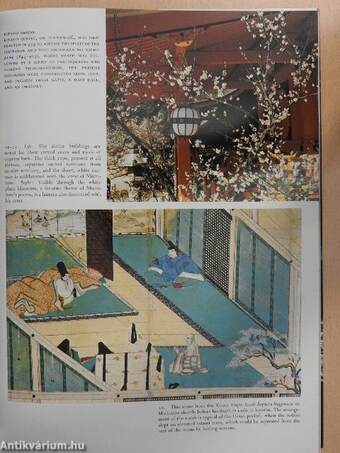1.067.715
kiadvánnyal nyújtjuk Magyarország legnagyobb antikvár könyv-kínálatát

VISSZA
A TETEJÉRE
JAVASLATOKÉszre-
vételek
Introducing Kyoto
| Kiadó: | Kodansha International Ltd. |
|---|---|
| Kiadás helye: | Tokió |
| Kiadás éve: | |
| Kötés típusa: | Fűzött papírkötés |
| Oldalszám: | 72 oldal |
| Sorozatcím: | |
| Kötetszám: | |
| Nyelv: | Angol |
| Méret: | 30 cm x 23 cm |
| ISBN: | 4-7700-1404-X |
| Megjegyzés: | Színes fotókkal, illusztrációkkal. További kapcsolódó személyek a könyvben. |
naponta értesítjük a beérkező friss
kiadványokról
naponta értesítjük a beérkező friss
kiadványokról
Fülszöveg
INTRODUCING KYOTO
Over a thousand years of history have shaped Kyoto, Japan's ancient capital. It was in a.d. 794 that Emperor Kammu visited the site, perceived that "the mountains and rivers make it a natural fortress," and pronounced it his capital. From these beginnings as the seat of imperial power, Kyoto developed into an important center of culture and religion, thereby giving rise to one of the most refined civilizations the world has seen.
As a consequence, walking the streets of Kyoto today is like a stroll through the pages of history. The numerous shrines and temples, permeated with the past, testify eloquently to the cultural heights the city has attained. However, the people of Kyoto, while being no less modern or prosperous than their counterparts in other Japanese cities, are strongly determined to preserve tradition in their daily life and customs: the festivals that enliven each season have been held annually for centuries; the traditional crafts that have made... Tovább
Fülszöveg
INTRODUCING KYOTO
Over a thousand years of history have shaped Kyoto, Japan's ancient capital. It was in a.d. 794 that Emperor Kammu visited the site, perceived that "the mountains and rivers make it a natural fortress," and pronounced it his capital. From these beginnings as the seat of imperial power, Kyoto developed into an important center of culture and religion, thereby giving rise to one of the most refined civilizations the world has seen.
As a consequence, walking the streets of Kyoto today is like a stroll through the pages of history. The numerous shrines and temples, permeated with the past, testify eloquently to the cultural heights the city has attained. However, the people of Kyoto, while being no less modern or prosperous than their counterparts in other Japanese cities, are strongly determined to preserve tradition in their daily life and customs: the festivals that enliven each season have been held annually for centuries; the traditional crafts that have made Kyoto famous abroad—weaving and dyeing, lacquerware, bamboo crafts, and ceramics—are still pursued today by artisans as skilled and meticulous as their forebears.
Thus the city of Kyoto is an embodiment of traditional Japan, and a discussion of it involves every aspect of Japanese culture, from the tea ceremony to temple architecture, from festivals to Zen gardens. In this book, the 87 superb color plates have been especially selected so that each period of Kyoto's vivid history is represented in chronological order by its outstanding buildings and works of art. With maps and a useful chronology, this absorbing introduction to an enchanting city is something no visitor should be without.
Jacket, front: Kinkaku-ji (the Golden Pavilion), built in 1397 by Shogun Ashikaga no Yoshimitsu. Back: A bridge across the Shirakawa River in the old Gion district of Kyoto. Vissza
Témakörök
- Idegennyelv > Idegennyelvű könyvek > Angol > Művészetek > Fotóművészet
- Idegennyelv > Idegennyelvű könyvek > Angol > Művelődéstörténet
- Idegennyelv > Idegennyelvű könyvek > Angol > Helytörténet
- Művelődéstörténet > Civilizációtörténet > Keleti
- Művelődéstörténet > Kultúra > Története
- Helytörténet > Külföldi > Egyéb
- Művészetek > Fotóművészet > Albumok > Külföldi
- Művészetek > Fotóművészet > Albumok > Tematikus
- Művészetek > Fotóművészet > Idegen nyelv > Angol
- Művészetek > Fotóművészet > Témái > Egyéb
Herbert E. Plutschow
Herbert E. Plutschow műveinek az Antikvarium.hu-n kapható vagy előjegyezhető listáját itt tekintheti meg: Herbert E. Plutschow könyvek, művekMegvásárolható példányok
Nincs megvásárolható példány
A könyv összes megrendelhető példánya elfogyott. Ha kívánja, előjegyezheti a könyvet, és amint a könyv egy újabb példánya elérhető lesz, értesítjük.



